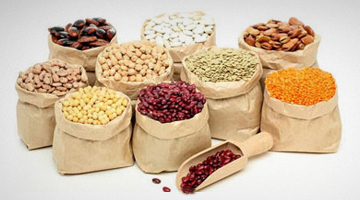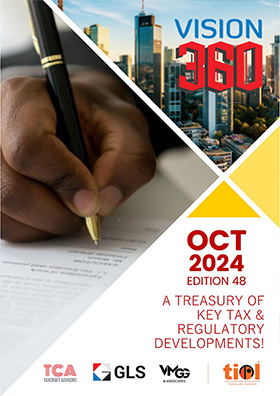The Packing, Repacking Syndrome
FEBRUARY 29, 2012
Pramod Kumar Rai, Advocate
A. Insertion of explanation in Section 2(f)
Packing, repacking, labelling or relabeling is very common nowadays. Especially in festive seasons, there is a common trend of making a bigger pack from smaller retail packs as gift pack. This activity is problematic in view of Section 2(f) if Central Excise act as explained below.
Under Central Excise Act certain processes of packing, repacking, labeling or relabeling has been deemed to be �Manufacture' under following two Categories �
(a) CETA specifies some processes in the section notes and chapter notes of First Schedule as �amounting to manufacture'. If any of these processes are carried out, goods will be said to be manufactured, even if as per Court decisions, the process may not amount to �manufacture' {section 2(f)(ii)}
(b) As per section 2(f)(iii), in respect of goods specified in third schedule to Central Excise Act, repacking, re-labeling, putting or altering retail sale price etc. will be �manufacture'. The goods included in Third Schedule of Central Excise Act are by and large same as those on which excise duty is payable u/s 4A on basis of MRP printed on the package.
Firstly there is considerable overlap between categories (a) and (b) above. Therefore, chapter notes declaring the processes of packing, repacking, labeling or relabeling, as deemed �Manufacture' should be deleted and for uniformity everything can be kept in Third schedule.
Secondly any person or entity engaged in the activity of packing or relabeling of goods will compulsorily become a �manufacturer' and will have to register itself with the central excise authorities under Section 6 of Central Excise Act, 1944 even if the activities does not result in value addition in terms of MRP. For example a person doing a repacking of goods where overall MRP shall be reduced. Even after registration the net payment of taxes shall be Nil by these categories of person on the one hand, however on the other hand it will be cumbersome to follow the excise procedure and it will be equally cumbersome for the revenue officials to scrutinize the returns of these assessed. In fact there will be cenvat accumulation for this person on account of lowering of MRP. This Cenvat accumulation can go further up if he is using some dutiable packing material.
Further if he fails to take registration he may has to face harassment at the hands of officers and a demand under 11A of the act for his deemed manufacturing activities without extending the benefit of Cenvat credit and thus effectively taxing the goods twice.
The problem is more acute in respect of commodities covered under notification 1/2011-Ex dated 1.3.2011 as no CENVAT credit is available under the notification and technically if any relabeling etc is done that will result into double taxation.
The idea of deemed manufacture has been introduced with an intention of extra revenue generation and not to harass people. Therefore, when a person or entity engages in packing or labeling of goods without changing its MRP or in some cases, lowering the MRP, then such person or entity should not be treated as a manufacturer and such process should not be covered under the term �manufacture' because no extra revenue will come by treating him a manufacturer.
Further comparison of MRP of goods should be done on per/unit quantity basis, as in many cases the person repacking the goods simply repacks the existing packaged goods into smaller or bigger retail packs for sale. Thus if a 2 kg packet of a good is priced at Rs. 20 and is repacked into smaller packets of 1 kg and priced at Rs. 10 per pack, then although the MRP of retail pack has been altered on account of change in pack size, the per unit MRP remains the same @ Rs. 10 per Kg and there is no value addition. Therefore cases like these should clearly fall outside the ambit of manufacture. In absence of proper clarification there may be harassment.
Therefore it is suggested that an Explanation to section 2(f) of Central Excise Act, 1944 which defines the term �manufacture' be inserted. The Explanation shall read as follows:
Explanation � The processes of packing, repacking, labeling or relabeling, in respect of goods covered under sub clause (ii) and (iii) of section 2(f) as given above, shall not amount to �manufacture' if such processes does not result in any increase in per unit Maximum retail sale price of the goods.
B. Make Service Tax registration at par with Excise Registration
At present ST registration is service specific i.e. for every taxable service to be provided there need to be a registration. In case an existing service provider is going to start a new taxable service he has to get his registration amended. If he imports a new taxable service, again he has to get his registration amended. This creates lot of problem. Where as in central excise a registered unit if plans to manufacture a new commodity there is no requirement of amendment in registration.
To rectify this anomaly, the service tax registration should be aligned with central excise registration. In central excise, the filing of monthly returns by the manufacturer is an effective way to monitor commodity revenues. Similarly in Service tax also the service tax return does incorporate taxable service wise details and thus there is no need to get the registration amended every time there is broadening of taxable services horizon for the taxpayer.
Therefore it is suggested that under Service tax the Service specific registration be discontinued and there should be a simple registration in as Service Tax assessee. The information about the new service will automatically incorporated in the half yearly returns which every service provider has to submit and department will have full service specific information for every assessee.















